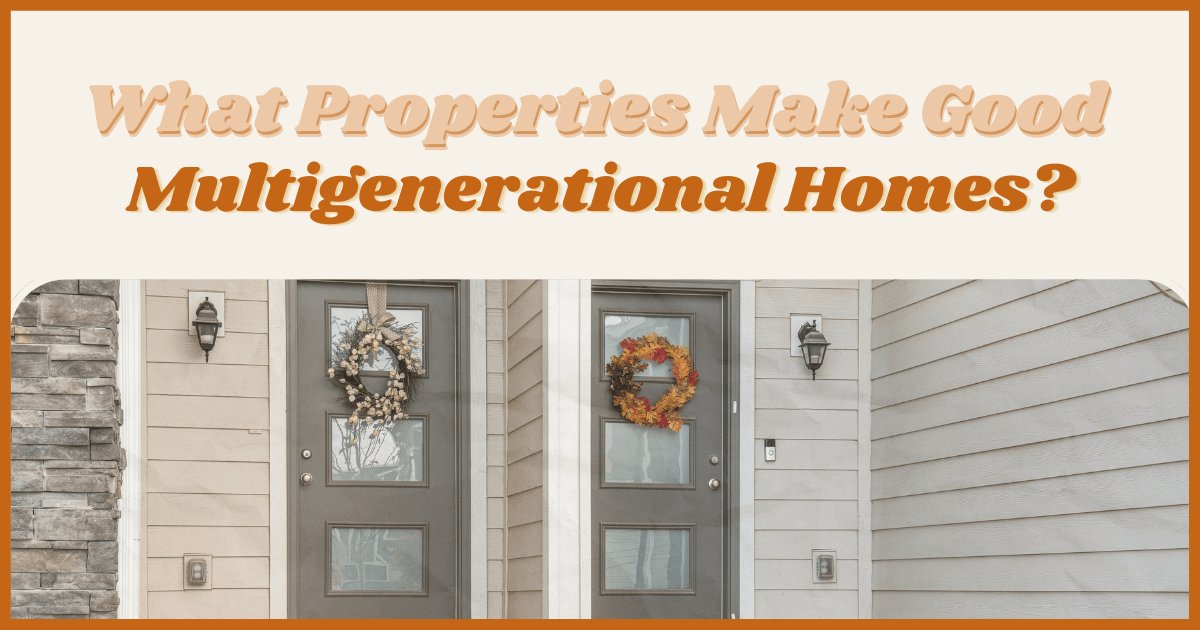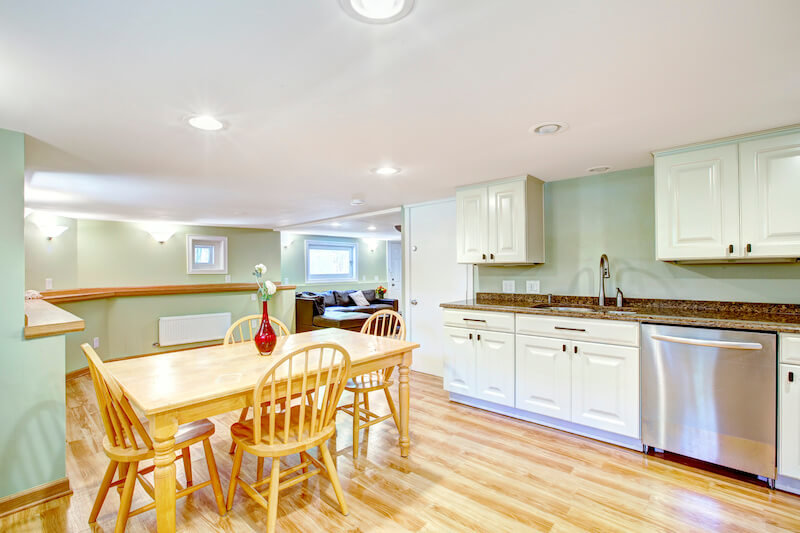3 Best Property Types for Multigenerational Housing
Posted by Justin Havre on Tuesday, October 11th, 2022 at 9:07am.

With rising housing costs, a growing number of Canadians are choosing to live in multigenerational homes with children, parents, and grandparents all under one roof. Which type of home works best for this living arrangement? Logically, multi-family homes are viable options for multigenerational families, but they aren't the only options.
Every family is different and will have different needs in terms of privacy and comfort. There are also many advantages to multigenerational living, such as elderly parents being able to age in place and more caregivers available for raising the children. Here is a closer look at different types of multigenerational homes where Canadians make an extended family living situation work.
Multigenerational Single-Family Home
A large single-family home can be a great option for multiple generations to live together. For example, the design of split-level homes often makes them viable for multigenerational living. There are several advantages that this living arrangement can provide.
Expanded Buying Options: There can be as many as four adult earners in a multigenerational family, significantly expanding buying options. Four incomes can contribute to a down payment and monthly mortgage payments. Homes that might otherwise be outside a couple's price range are more accessible in this scenario. There is added financial security under this model as well. If one person loses a job, there are still multiple incomes to cover mortgage costs.
More Caregiving Options: Caregiving can run in both directions in a multigenerational single-family home. Adults can care for their aging parents without worrying about the cost of a retirement home. Likewise, grandparents can help with childcare if they are of retirement age.
Environmental Advantages: Multigenerational households take up less square footage per inhabitant. This leaves a smaller ecological footprint than having two sets of adults in different homes. That translates directly into less energy used per individual and can even mean fewer cars per household.
A multigenerational home makes sense for the above reasons, but there are a couple of drawbacks to keep in mind:
Less Living Space: Each individual in the home will have less personal space and less privacy. Some families don't mind this. However, finding an ideal home large enough to accommodate everyone can be challenging.
Harder to Find the Perfect Home: No matter the circumstances, finding the "perfect" match for a family's needs can be challenging. This is especially true if the preferences of different family members aren't aligned, which they rarely are.
Accessory Dwelling Unit (ADU)

An accessory dwelling unit (ADU) is a secondary dwelling located on the property of an already-existing family home. ADU is a legal term and can encompass various residences, including a backyard cottage, a basement apartment, an above-the-garage apartment, a converted garage, or a tiny home. While the characteristics of bungalow architecture may not be tailor-made for multigenerational living, getting creative and supplementing one with an ADU on the property can result in a viable situation.
To legally qualify as an ADU, the dwelling or unit must have the following features:
- Its own foundation or a foundation shared with the primary residence
- Its own utility hookups, such as water, gas, and electric
- A living space that includes a bedroom, bathroom, kitchen, and living room
- Must be a permanent structure (not a mobile home or trailer)
An ADU has many of the same advantages as those listed above for traditional single-family homes. There are some extra considerations when planning to add an ADU to an existing property.
For example, a basement or attic ADU might not be feasible if an elderly loved one has difficulty managing stairs. The owner's property can also impact the type of ADU being constructed. There are different regulatory requirements depending on whether the primary residence is a single-family home, a multi-family home, or a duplex.
Some additional important questions to consider before having an ADU built include the following:
- Is the home adequately zoned to allow an ADU?
- What can be built?
- Where on the property can it be built?
- What are the options for having it built?
Duplex, Triplex & Quadplexes as Multigenerational Homes
A duplex, triplex, or quadplex can be a great real estate investment opportunity for a family, especially if the owner lives in one unit as their primary residence. The buyer can live in one unit, and the aging parents can live in a second unit. Additional renters can help cover the mortgage costs in a triplex or quadplex.
These structures require a 20% down payment in Canada if the owner does not plan to live in one of the units. However, if one unit is going to be their primary residence, the owner can pay a 5% down payment on a duplex and a 10% down payment on a triplex or quadplex. This option makes these properties attractive for anyone considering investing in real estate.
If the property's purchase price exceeds $500,000, the buyer has to put down 5% on the first $500,000 and then 10% on any amount over $500,000. Even with this additional rule, it is much more cost-effective than paying 20% down.
Duplexes, triplexes, and quadplexes also work well for families in a multigenerational setting. The owner and their aging parents can be on the ground floor in a side-by-side living situation (no stairs to navigate). Both generations have easy access to each other while maintaining a greater degree of privacy for each generation.
Multigenerational Homes Are Growing More Popular
The number of multigenerational homes in Canada has been growing in recent years since there is an aging population and lifespans are increasing. Every family's living situation is different, so buyers should think carefully before deciding which type of home will work best for them. However, the financial incentives to invest in this type of real estate are considerable and easily outweigh the downsides of multigenerational living.

